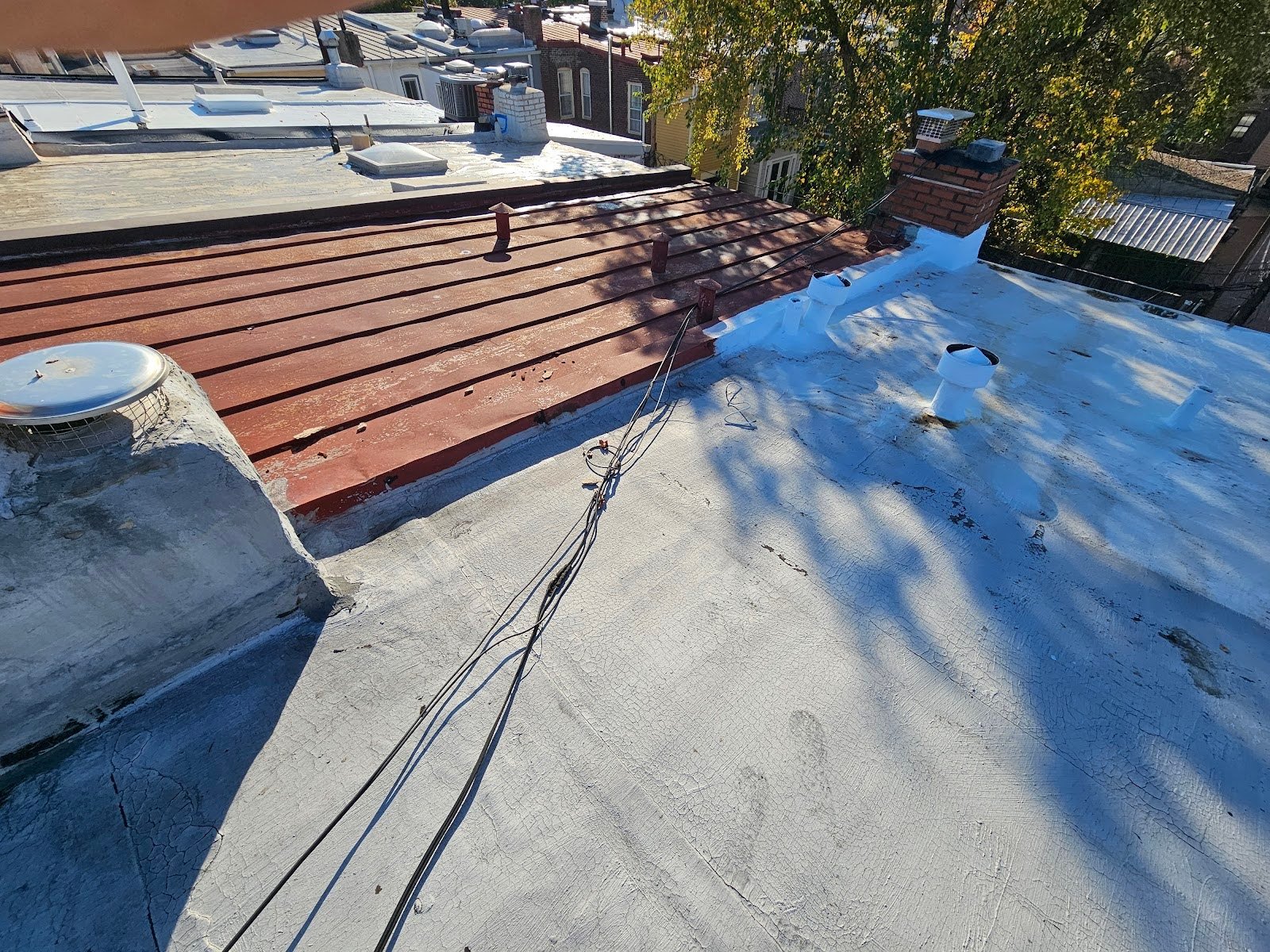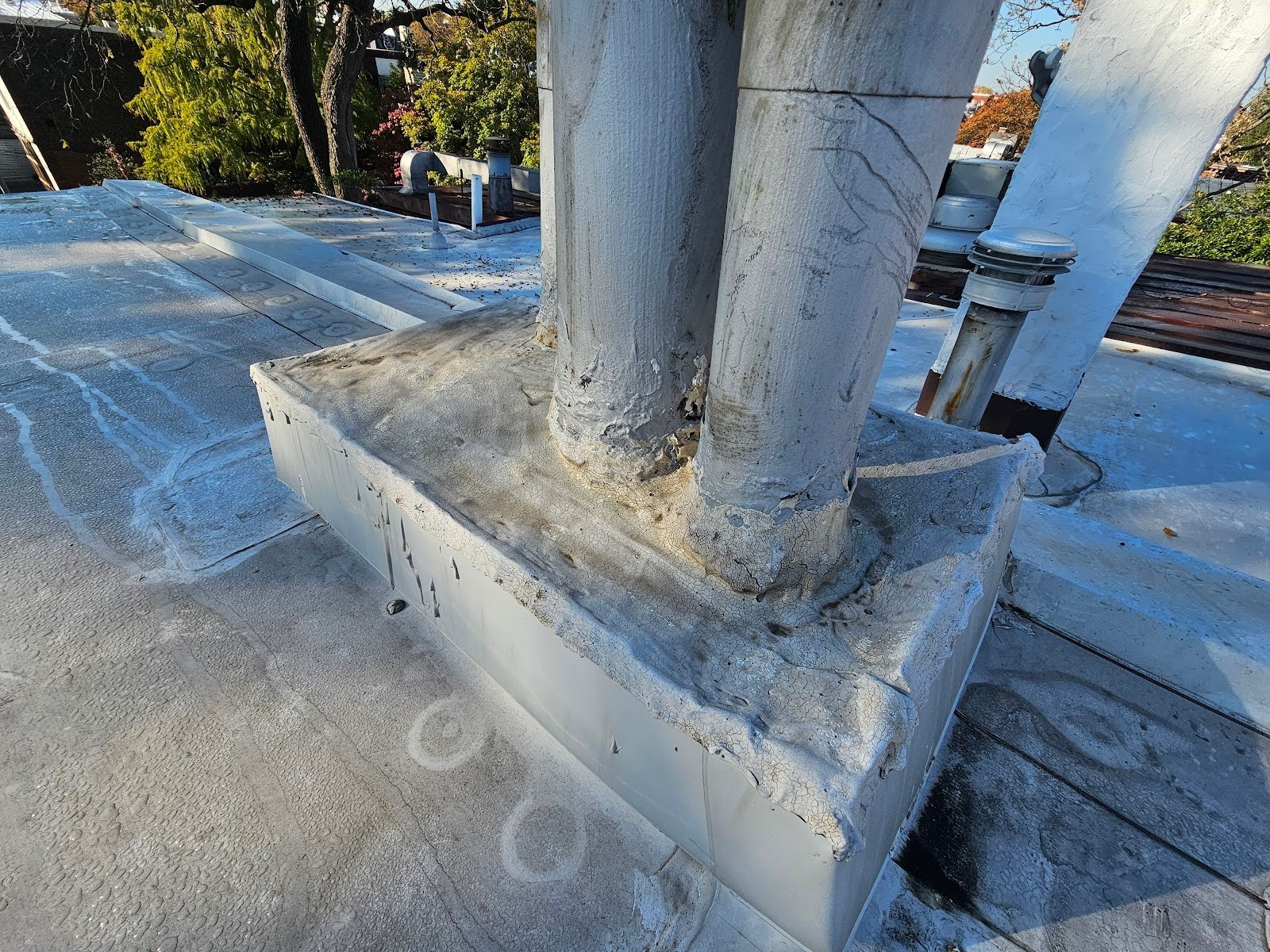Painted Metal Roofs: Durable & Stylish Solutions
There are an inordinately high amount of metal roofs here in Washington DC. When you compare this particular geographic area, mathematically or by any other comparative means, there are proportionately very many metal roofs. Metal roofs have been used for over 100 years. They can be built in relatively lightweight form and are relatively easy to install.
This particular craft is a dying trade, though. And today the materials used in metal roofing are different than they were less than just one generation to go. Metal roofs, historically, here in Washington DC, were very effective. In many cases the historic metal roofs had a bit of lead in the overall alloy of materials. Alloys are a mixture of various metals. When leas was used and added in the mixture of the metals used in flat roofing, it made the metal much more resistant to exposure of the elements.
In recent years, lead was removed from most types of metals used in flat roofing. Lead is known to pollute our waterways and lead to negative environmental effects. Even more so than in just the rainwater that runs off our roofs and is then fed into the watershed around our area, the manufacturing processes of metal roofs materials can be harmful and hazardous.
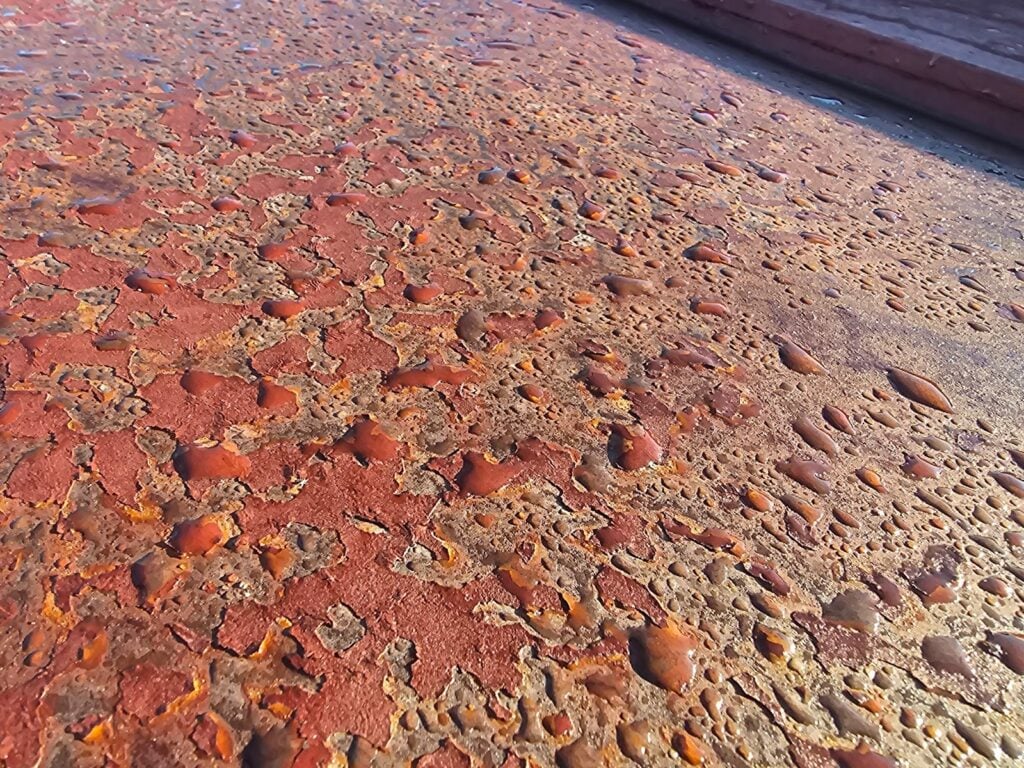
Today, we’re looking at several photographs from a historic low slope standing seam metal roof. The roof is covered with a tinner’s red color paint. The name of tinner’s red paint was used commonly before the advent of many more modern types of sheet metals. The name basically applied to roofing created or fabricated from sheet metal.
When you look closely in the picture above, you may notice both the red color of the paint and a slightly more orange-ish color of many spots and circles of rust. This particular metal roof surface has areas of both remaining paint and also areas where that paint has delaminated and flaked off the surface and where the ferrous substrate metal has now rusted. A ferrous metal is one that contains iron.
Iron can be used in many different types of metal alloys and in some cases is found in other similar metals like steel and stainless steel. Other elements can be added to iron type alloy metals to change the composition in the nature of the characteristics of the metal, considerably.
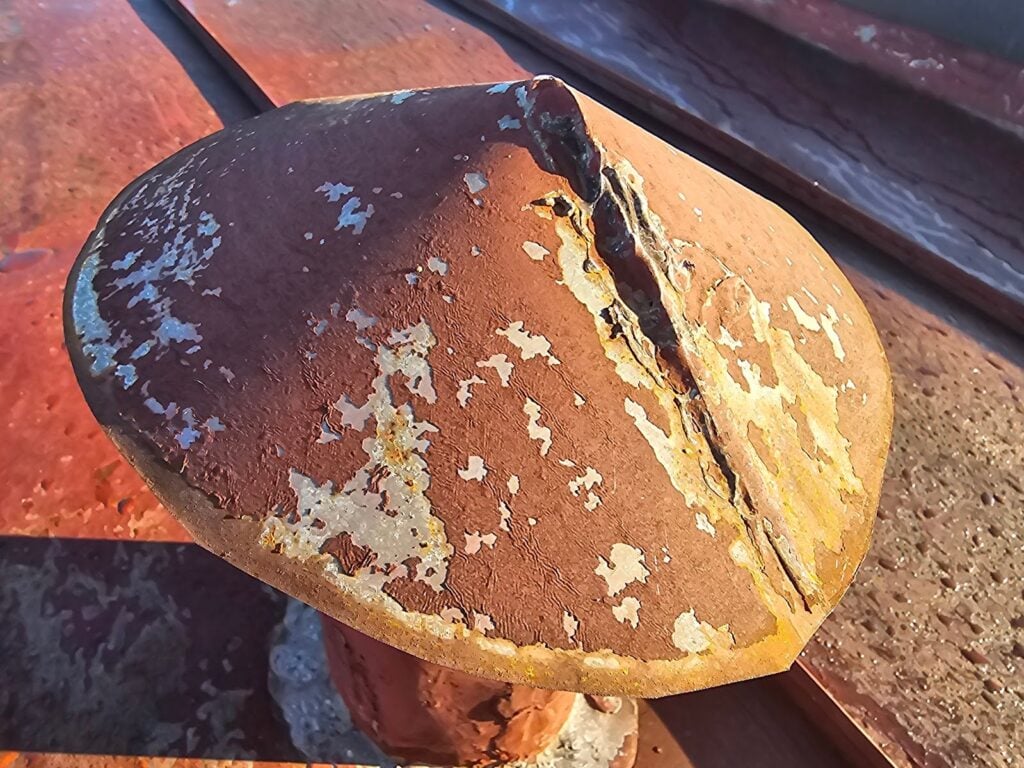
The next picture below shows another area of this roof more closely. Here, you can see that there is actually a lower proportion of the surface that is actually covered with rust then which has been left bare. As the paint has deteriorated, it then delaminated, and then flaked off and washed away or blew off the surface of the roof. As the ferrous metal below was exposed to the elements, it has started to rust significantly.
Rust is the same as iron oxide which is essentially the oxidation of iron on a molecular level. Iron bonds to oxygen in the air but the catalyst for this molecular change is highly activated and driven through exposure to water. In fact, without molecules of water, the metal is almost stable. The exposure to water though, both in vapor form in the air and in liquid water form through precipitation, is almost ever present.

As you look down across the surface of the roof, you can see the standing seams standing up above the horizontal or low slope roof system. As these seams stand up, where each thin sheet butts up from one sheet to the next, they are then folded over on top of each other.
These seams can also be laid down in a horizontal position but in most cases of laying the seams down, you should also treat the seams with a soldering of one type or another. Having the seam stand up, especially when the top is rolled over, keeps most types of falling precipitation out of the interstitial space between the seams. A standing seam, as well, also offers a bit more rigidity in the planar surface of the roof.
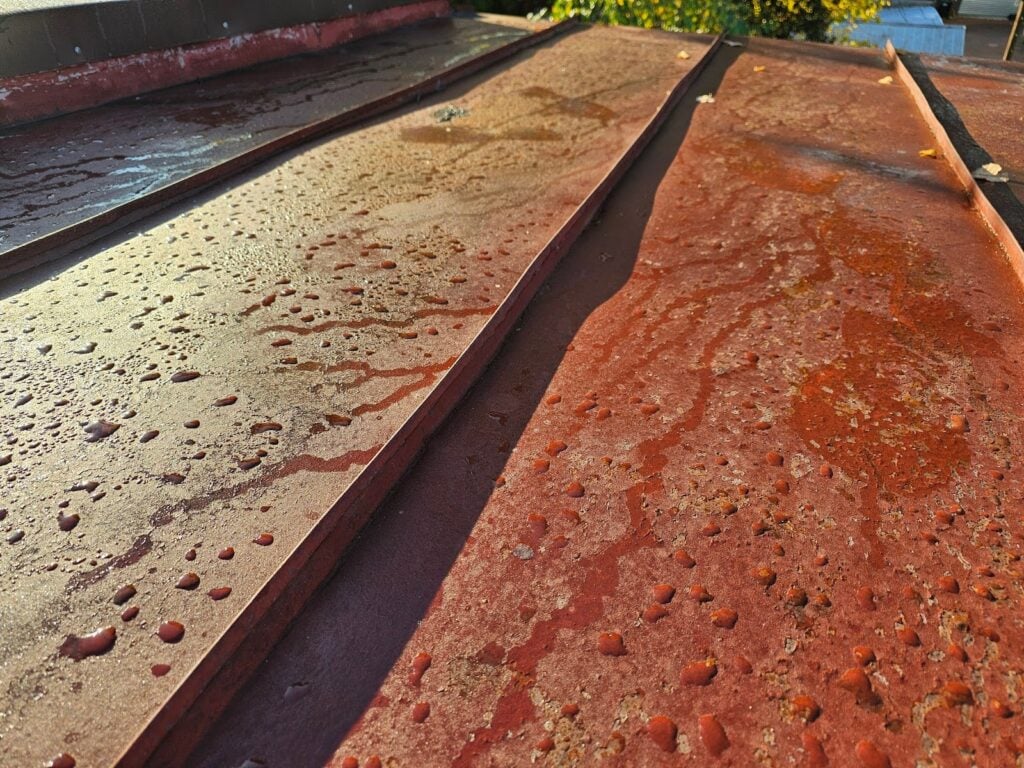
The next picture below shows another view of the up close surface where the oxidation has covered the majority of the surface. You can see water beading up on top of the roof and you can also tell that the water basically beads up, indiscriminate of whether it is a covered or uncovered part of the surface.

The rainwater runs down the surface of these roof panels between the seams. And most cases, as shown here, these low roofs are installed so that the front of the building is higher than the rear. That difference allows there to be a natural slope in the roof. Although the slope is only a small amount of overall height difference, it’s enough for most typical water events to shed relatively easily in a passive way.
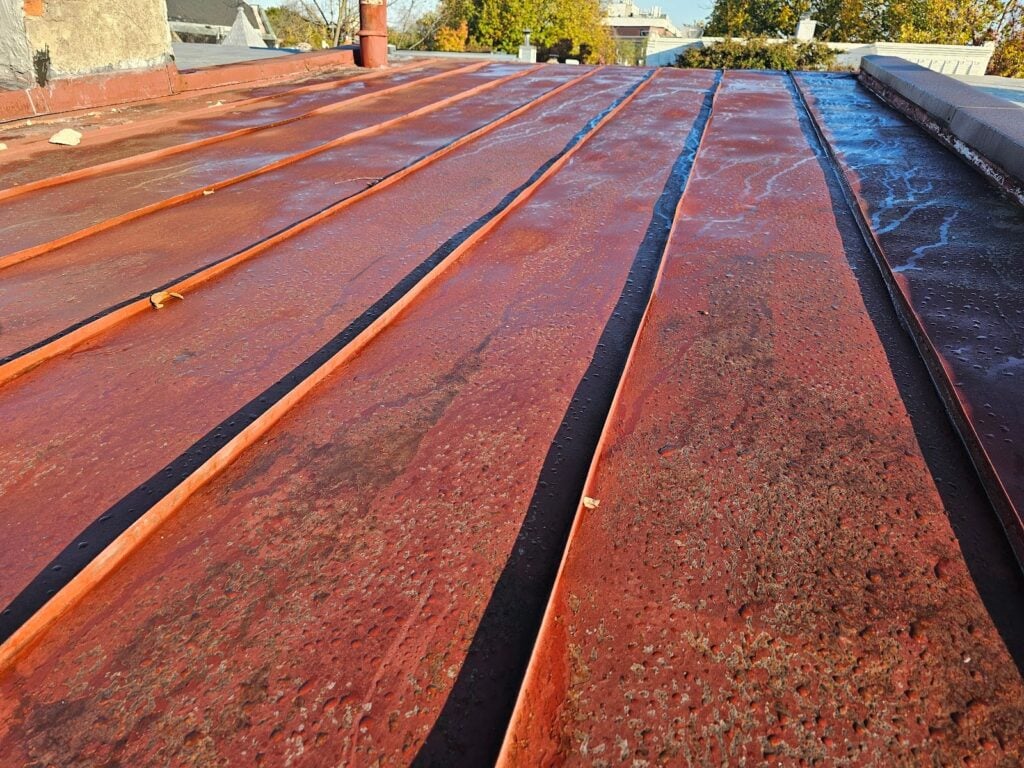
We provide this information here on our blog, and our website, to help our customers and future clients, and we recommend every building owner in DC who values the longevity of their roof (and their investments) and building use a contractor who values the simple and important principles of proper roof construction like Dupont Roofing DC. Our company specializes in flat roofing here in Washington DC and we’re happy to help building owners of almost all types.
Learn more about our company and the proper techniques of working with roofing on historic buildings in Washington DC here on our blog at DupontRoofingDC.com, and you can call us at (202) 840-8698 and email us at dupontroofingdc@gmail.com. We are happy to help and at least talk through options.

